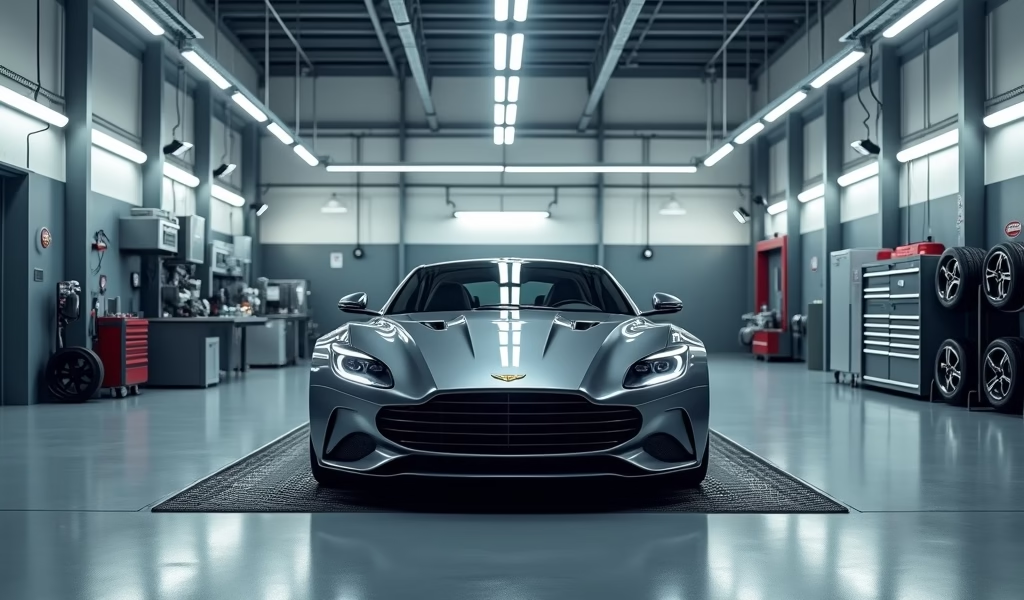Overview
This article examines what constitutes a good interest rate for car loans, explaining that rates vary significantly based on credit score (with excellent credit qualifying for 3-4% and poor credit facing 15-20%+), loan term, and vehicle type. It provides practical strategies for securing better rates, including improving credit scores, getting pre-approved before visiting dealerships, making larger down payments, and considering total loan costs beyond the interest rate alone.
Table of Contents
- What Determines Car Loan Interest Rates
- Current Average Car Loan Interest Rates
- What Is Considered a “Good” Interest Rate
- How to Secure the Best Interest Rate
- Beyond the Interest Rate: Other Factors to Consider
- Ready to Find Your Best Rate?
- Conclusion
- Frequently Asked Questions
That new car smell is intoxicating, isn’t it? But before you get carried away with daydreams of cruising down the highway in your shiny new vehicle, let’s talk about something that might not smell as sweet: your car loan interest rate.
Just like checking the oil before a long journey, understanding what makes a good interest rate is essential preventative maintenance for your financial well-being. That seemingly small percentage can add thousands to your total cost over time – kind of like a slow oil leak that gradually drains your wallet.
I’ve spent years helping folks navigate the sometimes murky waters of auto financing, and I’ve noticed one thing: many people focus on the monthly payment while overlooking the interest rate that drives it. That’s like worrying about a squeaky belt while ignoring your smoking engine.
Let’s pop the hood and take a closer look at what makes a good interest rate for a car loan in today’s market. I promise to keep the financial jargon to a minimum – just straight talk from someone who’s seen countless deals, good and bad.
What Determines Car Loan Interest Rates
Your credit score is the most powerful tool in your financial garage. This three-digit number tells lenders how well you’ve handled credit in the past, and they use it to predict how you’ll handle it in the future. The higher your score, the lower your interest rate – it’s that simple.
Think of your credit score as your financial reputation. A score above 720 is like having a spotless service record, while anything below 580 suggests you’ve had some major breakdowns along the way.
The broader economy also plays a huge role in determining rates. When the Federal Reserve adjusts its benchmark interest rate, it’s like changing the oil grade for the entire financial system – everything flows differently afterward. When the Fed raises rates to fight inflation, car loan rates typically climb in response.
Your loan term matters too. Shorter loans (36-48 months) generally come with lower interest rates than longer terms (72-84 months). Lenders see longer loans as riskier – more time for something to go wrong with your finances or the vehicle.
New versus used makes a big difference. New cars typically come with lower interest rates because they provide better collateral. A used car is like a high-mileage engine – it might still run great, but there’s more uncertainty about its future performance.
Finally, your choice of lender can shift your rate by several percentage points. Credit unions often offer the most competitive rates (sometimes 1-2% lower than banks), while finding the lowest car loan rates might require shopping around to multiple lenders.
Current Average Car Loan Interest Rates

As of today’s market, the average new car loan interest rate sits around 6.5-7%, according to Experian’s latest auto financing report. That’s notably higher than the 4-5% we saw a few years ago, before inflation kicked into high gear and the Fed responded with rate hikes.
Used car loans are running about 2 percentage points higher, averaging between 8.5-10% for most borrowers. It’s like the premium you pay for uncertainty – used vehicles come with more question marks.
But these averages mask the enormous range based on credit scores:
- Super-Prime (781-850): 3-4% for new, 4-5% for used
- Prime (661-780): 4-6% for new, 5-7% for used
- Non-Prime (601-660): 7-9% for new, 10-12% for used
- Subprime (501-600): 11-15% for new, 15-19% for used
- Deep Subprime (300-500): 15-20%+ for new, 20%+ for used
The difference between top-tier and bottom-tier rates is staggering. On a $30,000 loan over 60 months, a Super-Prime borrower might pay $3,000 in total interest, while a Deep Subprime borrower could pay over $15,000 for the same car.
Loan terms have been stretching too. The average new car loan now runs about 70 months – nearly six years of payments. While this helps keep monthly payments manageable as vehicle prices climb, it means more interest paid over the life of the loan.
Regional variations exist as well. Competitive markets like California and New York often see slightly lower rates than rural areas with fewer lenders. It’s worth checking rates specific to your location rather than relying solely on national averages.
What Is Considered a “Good” Interest Rate
A good interest rate isn’t a one-size-fits-all number – it’s relative to your specific situation. It’s like asking what’s a good oil change interval – it depends on your driving habits, vehicle, and conditions.
For excellent credit (740+), I’d consider anything below 4.5% on a new car and below 5.5% on a used car to be good in today’s market. If you’re in this enviable position, you should be getting offers at the lower end of the spectrum, similar to a well-maintained vehicle demanding top dollar.
With good credit (670-739), rates between 4.5-6.5% for new and 6-8% for used vehicles represent fair deals. You’re not getting the absolute best rates, but you’re still in the sweet spot where financing makes good financial sense.
For fair credit (580-669), expect to work a bit harder. Rates below 9% for new cars and below 12% for used cars would be considered competitive. At these levels, the interest starts to become a significant portion of your total cost – like a vehicle that’s starting to burn oil but still gets you where you need to go.
With poor credit (below 580), double-digit rates are almost unavoidable. Anything below 15% for new and 20% for used might be the best you can hope for without a co-signer. These rates are painful, similar to driving with a serious mechanical issue – it works, but at a cost that will drain your finances.
Here’s a practical way to think about it: if your interest rate is within 2 percentage points of the national average for your credit tier, you’re in reasonable territory. If you’re getting offered rates significantly higher than this benchmark, it’s time to shop around or reconsider your timing.
Remember that special manufacturer financing, including zero interest car deals, can dramatically alter this calculation. These promotional rates often require excellent credit but can save thousands compared to standard financing.
How to Secure the Best Interest Rate
Improving your credit score is like giving your financial engine a complete overhaul – it takes time but delivers powerful results. Even a 50-point improvement can unlock significantly better rates. Start by checking your credit report for errors (they’re surprisingly common), paying down existing debt, and ensuring all bills are paid on time for several months before applying.
Getting pre-approved before walking into a dealership is like bringing your own toolbox – it gives you leverage. Contact credit unions, online lenders, and traditional banks to compare offers. Credit unions deserve special attention, as they typically offer rates 1-2 percentage points lower than commercial banks.
Consider making a larger down payment. Every additional dollar you put down reduces the lender’s risk, potentially qualifying you for a better rate. Aim for at least 20% down to show lenders you have skin in the game.
Shorter loan terms generally come with lower interest rates. While a 72-month loan might seem attractive for its lower monthly payments, you’ll likely get a better rate with a 48 or 60-month term. The total interest savings can be substantial.
Time your purchase strategically. End-of-month, end-of-quarter, and especially year-end periods often bring special financing incentives as dealers push to hit sales targets. Dealerships sometimes receive incentives from manufacturers for hitting volume targets, making them more flexible on financing during these periods.
Don’t be afraid to negotiate. Interest rates aren’t always fixed, especially at dealerships. If you have competing offers in hand, many lenders will match or beat a competitor’s rate to earn your business. This is particularly effective if your credit is good to excellent.
Consider exploring 0 APR car deals from manufacturers. These special promotional rates can save thousands compared to conventional financing, though they typically require top-tier credit and may come with shorter terms or exclude rebates.
Beyond the Interest Rate: Other Factors to Consider

The interest rate is just one component of your financing package – like focusing solely on the engine while ignoring the transmission and suspension. The Annual Percentage Rate (APR) provides a more complete picture by including fees and additional charges beyond the base interest rate.
Watch out for loan origination fees, documentation fees, and other charges that can significantly impact your total cost. Some lenders offset attractive interest rates with higher fees – a classic bait-and-switch tactic similar to advertising a low-priced oil change that suddenly requires expensive “additional services.”
Prepayment penalties are another potential pitfall. These charges, designed to compensate lenders when you pay off your loan early, can make refinancing costly or eliminate the benefits of making additional payments. Always verify whether your loan agreement includes such restrictions.
Special financing offers like 0% APR can be fantastic deals, but they often come with strings attached. These promotions typically require excellent credit scores, shorter loan terms, and may force you to forego cash rebates that could potentially be more valuable depending on your situation. As advised by the Consumer Financial Protection Bureau, always calculate the total cost under each scenario.
Gap insurance becomes an important consideration with low down payments or longer terms. This coverage pays the difference between what you owe and what your car is worth if it’s totaled or stolen. Without it, you could be making payments on a car you no longer have – a financial nightmare scenario.
Finally, consider the total cost of ownership beyond financing. A slightly higher interest rate on a more fuel-efficient, reliable vehicle might still result in lower overall costs compared to a gas-guzzler with frequent repair needs financed at a lower rate.
Ready to Find Your Best Rate?
Now that you understand what makes a good interest rate, it’s time to put that knowledge to work. Start by checking your credit score – this single step will give you a realistic picture of what rates you should expect. Many credit card companies offer free credit score access, or you can use services like Credit Karma.
Create a simple spreadsheet to compare offers. Include columns for the interest rate, loan term, monthly payment, and total interest paid over the life of the loan. This makes it easy to see which offer truly provides the best value beyond just the monthly payment.
Don’t rush the process. Taking an extra week to shop rates can save thousands over the life of your loan. It’s like spending an hour researching parts before a repair – a small time investment for significant savings.
Consider relationship discounts. Many banks and credit unions offer rate reductions (0.25-0.50%) for existing customers or those who set up automatic payments. These seemingly small discounts add up substantially over a multi-year loan.
If your credit is less than stellar, consider asking a family member with strong credit to co-sign. This can unlock much better rates, though it comes with the serious responsibility of putting their credit on the line alongside yours.
Remember that timing matters. Interest rates fluctuate with economic conditions. If rates are trending upward, locking in sooner might make sense. If they’re expected to fall, waiting a few months could yield better offers.
Conclusion
Finding a good interest rate for your car loan is like performing proper maintenance on your vehicle – it requires attention to detail and a bit of research, but the long-term savings make it worthwhile. The difference between an average and an excellent rate might seem small on paper, but can translate to thousands of dollars over the life of your loan.
Today’s market is challenging, with rates higher than we’ve seen in recent years, but good deals are still available for prepared borrowers. Focus on improving your credit score, shop around diligently, consider shorter loan terms, and don’t be afraid to negotiate.
Remember that the best rate for you depends on your specific financial situation. What’s “good” for someone with excellent credit will differ from what’s “good” for someone rebuilding their credit history. The key is to know what’s realistic for your circumstances while pushing to get the most favorable terms possible.
By approaching car financing with the same care and attention you’d give to maintaining your vehicle, you’ll drive away with both a car you love and a loan you can live with. That’s the kind of preventative financial maintenance that keeps your budget running smoothly for years to come.
Frequently Asked Questions
Can I get a good interest rate with bad credit?
It’s challenging but not impossible. Focus on securing rates below 15% for new cars and below 20% for used vehicles, or consider a creditworthy co-signer to access better rates.
Is 0% financing really free money?
While there’s no interest, zero-percent financing often requires excellent credit and may mean forgoing cash rebates. Calculate both scenarios to determine which saves you more money overall.
How much can refinancing lower my interest rate?
Refinancing typically reduces rates by 2-3 percentage points for qualified borrowers. This is most beneficial early in your loan term when more of each payment goes toward interest.
Do longer loan terms always mean higher interest rates?
Yes, longer terms (72-84 months) typically come with higher interest rates than shorter terms (36-60 months). Lenders charge more for the extended risk period.
Should I accept dealer financing or get pre-approved elsewhere?
Get pre-approved first to have a strong baseline for negotiation. Sometimes dealers can beat outside offers through manufacturer incentives, but having a pre-approval gives you leverage.

